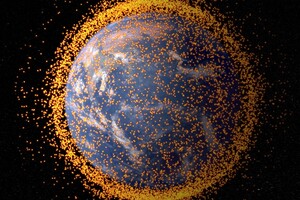So far, 16 fragments related to the incident have been traced.

Russia's space activities have led to the emergence of a new pile of space debris in orbit. According to Space.com, object number # 32398 disintegrated into parts on April 15, so far 16 fragments related to the incident have been traced.
This object was the engine of a space tug that helped bring out three GLONASS satellites into orbit in 2007.
Read also: Ukraine will be given access to operational detailed satellite images to monitor its territory – Bloomberg
Astrophysicist Jonathan McDowell of the Harvard-Smithsonian Center for Astrophysics claims that the satellites launched into orbit with a Proton launch vehicle, the upper stage of which was equipped with two small engines. These engines accelerate slightly to ensure the correct placement of the accelerator fuel in the tanks to restart the engines in orbit.
The scientist notes that 64 similar engines are currently known in Earth orbit. They are known as SPZ – Launch System.
“SPZ engines do not burn all the fuel during start-up. They have the unpleasant feature of exploding years or even decades later, leaving a pile of debris in a highly elliptical orbit. At least 54 SPZ engines are currently known to have exploded, “McDowell wrote.” The astrophysicist claims that the engine explosion was expected and predicted, but still “it is a very sad event.”
Space debris is a problem for launching satellites and planning space missions. According to the European Space Agency, there are now about 36,500 fragments in Earth orbit measuring at least 10 centimeters. It is likely that there are at least a million fragments in the orbit, ranging in size from one to 10 centimeters. This decision was made in connection with the full-scale invasion of the aggressor country in Ukraine.




